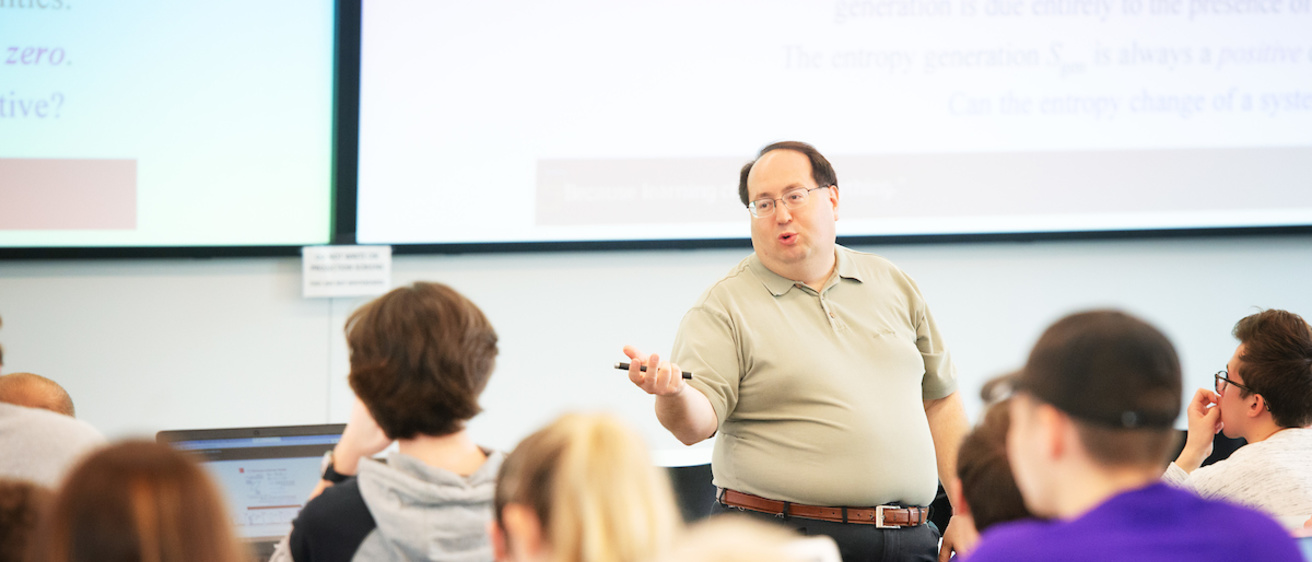Access to lab space and equipment, freedom to research diverse topics, and faculty mentorship gave former University of Iowa student scientists from the Ratner Research Group a leg up as they’ve taken opportunities across the country.
A common thread emerged during a recent Zoom call between three College of Engineering alumni – one now at Penn State University, one at Argonne National Laboratory outside Chicago, Ill., and one at Massachusetts Institute of Technology (MIT) – and Albert Ratner, a professor of mechanical engineering and director of the research group studying combustion, fuels, and energy.
The Ratner Research Group is among more than 25 labs and centers that make up the University of Iowa Technology Institute, a research arm of the College of Engineering powered by student scientists, faculty, and professional researchers.
The alumni felt better prepared relative to some colleagues who’d come from larger programs with more national acclaim.
“My experience shows why small groups can be better than big ones,” said Guiyan Zang, a spring 2019 PhD graduate and current postdoctoral appointee at Argonne, the largest national research lab in the Midwest.
Working in the large lab at Argonne, staff use data from experiments to conduct work, Zang said.
“I am the lucky one because I worked with Dr. Ratner’s group, which gave me experience conducting the experiments,” Zang said. “This helps me work more efficiently than others who do not have hands-on experimental experience.”
At Iowa, students interested in research find a “sweet spot.”
Iowa is large enough to have ample research opportunities and technological resources, yet small enough that students work one-on-one with faculty mentors, gain hands-on experience with a variety of equipment and projects, and don’t struggle to access lab space.
“All of my students can do a range of things,” Ratner said. “We have cutting-edge equipment, and advisors are looking to help. Schools smaller than Iowa might not have the resources. At larger schools, faculty advisors want to focus on one area of research, and lab space may be limited.”
Iowa students may explore three or four different areas of research, and collaboration with people across colleges and departments is encouraged compared to more siloed environments, Ratner said.
“We are in a sweet spot with a lot of good equipment and software, but we are flexible enough that students do a lot of different projects,” he said.
Zang's experiences helped her handle the expectations at Argonne where she is conducting life-cycle assessments, such as economic and environmental impacts, for technologies involved in producing renewable fuels.
“When I was searching for a job, the leaders at Argonne said they valued the training from Iowa,” Zang said. “The leadership had strong respect for Iowa.”
Gurjap Singh, a December 2019 Iowa alum, is a post-doctoral researcher at Penn State. He has been testing an oxidant additive to lithium-based fuel, which scientists hope can safely generate heat for a moon lander’s parts and systems, as part of a 2023 NASA project.
Setting up equipment and experiments, image processing, and cross-discipline collaboration while at Iowa have proved valuable, he said.
Direct access to Ratner provided insights into the workings of the Department of Energy and connections in the combustion community. Close relationships with faculty are not a given in larger programs with less focus on student development.
“One of the biggest advantages you can get working at UI is the amount of connections you make,” Singh said.
Jianan Zhang, who earned his PhD under Ratner in August 2017, appreciated working in a smaller group where he not only had access to cutting-edge equipment but could actually use it. Now at MIT, he is working to improve the lithium ion battery for electric vehicles.
Students who come to Iowa get a small-school experience, but the training provides unique preparation for their next career move, Ratner said.
